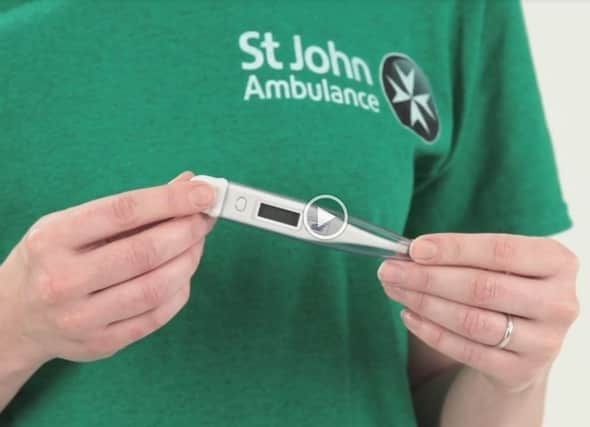VIDEO: Fighting flu and fever - advice from the experts at St John Ambulance


With Aussie flu sweeping the UK - and the French version predicted to strike next - there's a chance that anyone could be laid up with one of a variety of seasonal bugs that lead to a fever.
And the NHS is under even more pressure with sick people fearful that the sniffles could lead to something much more severe.
Advertisement
Hide AdAdvertisement
Hide AdSo to help establish if you've been stricken by a virus or a nasty cold, and how to alleviate the symptoms, the good people at St John Ambulance have put together a guide to treating a fever.
Fever
A fever is when a person has a persistent high temperature above 37°C (98.6°F). This is normally caused by a bacterial or viral infection and are often associated with a sore throat, earache measles, meningitis or chickenpox. Beware of recent overseas travel. If a young child’s temperature rises above 39°C (102. 2°F) this can be dangerous and might trigger a seizure.
What to look for
A persistently high temperature - above 37°C (98.6°F)Feeling cold, with goose pimples, shivering and chattering teeth
Later they may have:
Hot, flushed skin and sweatingA headacheGeneral aches and pains
What to do:
Advertisement
Hide AdAdvertisement
Hide AdIf someone has a fever help make them comfortable and keep them cool, ideally in bed with a sheet or light duvet. Do not use a sponge to cool them as there is a risk of overcoolingGive the casualty plenty of cool drinks to replace any fluid loss through sweatingIf they’re feeling unwell, you can give them the recommended dose of paracetamol tablets for an adult, or the recommended dose of paracetamol syrup for a child. Do not give aspirin to anyone under the age of 16Monitor their level of response until they recover. If you are worried, seek medical advice.
For more free first aid advice, please go to www.sja.org.uk/firstaid